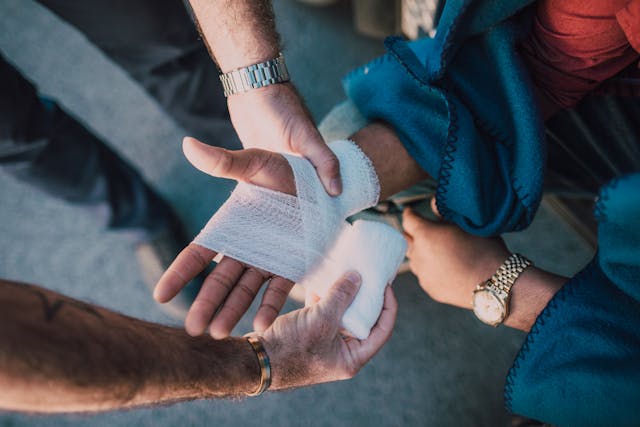Experiencing an accident is a life-altering event that extends beyond physical and emotional recovery, plunging many into the daunting world of financial uncertainty. The journey back to stability requires more than just time—it demands strategic planning and an understanding of the resources at your disposal. Let’s walk through the essential steps to managing your finances post-accident, covering everything from budgeting and finding support to rehabilitation and understanding personal injury settlements.
Crafting a Post-Accident Budget: Your Financial Blueprint
The first step towards financial recovery is establishing a budget that reflects your current reality. This means taking a hard look at your income, if it’s been affected by your inability to work, and prioritizing your expenses. Essentials like rent, utilities, and medical bills take precedence. It’s also wise to contact creditors to discuss your situation; many are willing to work with you on payment plans. This budget isn’t set in stone—it’s a living document that will evolve as your situation changes, but it’s an invaluable tool for keeping your financial health in check during uncertain times.
Seeking Support: Navigating Mobility and Daily Life
Post-accident life may require adjustments to your daily routine, especially if your mobility has been impacted. Thankfully, numerous resources and services are available to assist in making your day-to-day life manageable. This could include transportation services for those unable to drive, home modification companies to make your living space more accessible, or local community groups offering support to individuals facing similar challenges. Tapping into these resources can significantly alleviate the logistical and financial burden of adjusting to life post-accident.
The Road to Rehabilitation: Investing in Your Recovery
Rehabilitation is a crucial aspect of recovery, both physically and financially. Investing time and resources into your rehabilitation process not only aids in your physical recuperation but can also expedite your return to work, thereby stabilizing your financial situation. Exploring various rehabilitation options, from physical therapy to specialized treatment programs, and understanding your insurance coverage can help in making informed decisions about your rehab plan. Remember, every step forward in your physical recovery is a step towards financial recovery as well.
Understanding Personal Injury Settlements: A Financial Lifeline
For many, a personal injury settlement represents a critical financial lifeline in the aftermath of an accident. Navigating this process requires a keen understanding of your rights and the compensation you may be entitled to. Here’s a quick checklist to guide you:
- Document Everything: Keep detailed records of medical expenses, lost wages, and any other costs related to your accident.
- Seek Legal Advice: Consult with a personal injury lawyer to understand the full scope of your entitlements. The key here is finding a respectable and fair firm to do business with. Check the site properly to make sure they know what they’re talking about. For example personalinjuryclaimsUK.org.uk details the process in full.
- Negotiate Wisely: Be prepared to negotiate with insurance companies, armed with evidence of your expenses and the impact of the accident on your life.
- Consider Long-Term Needs: Ensure any settlement considers future rehabilitation costs and potential long-term financial implications.
Armed with knowledge and the right support, navigating the financial aspects of a personal injury settlement can provide much-needed relief during your recovery journey.
Community and Government Assistance
In the aftermath of an accident, exploring community and government assistance programs can be a beacon of hope for those struggling financially. Many regions offer support schemes designed to alleviate the burden on individuals facing sudden hardship due to accidents. From subsidized medical care to grants for temporary disability, these resources can provide a crucial buffer. Engaging with social workers or community support organizations can open doors to these benefits, helping you navigate the application process and understand the scope of assistance available. This step not only brings immediate relief but also ensures that you’re not leaving any stone unturned in your quest for financial stability during recovery.
Planning for the Future: Beyond Immediate Recovery
As you navigate the present challenges, it’s equally important to cast an eye towards the future. This means setting up a financial plan that accounts for potential long-term impacts of the accident. It might involve adjusting your savings goals, exploring insurance options to cover future medical needs, or even considering career retraining if returning to your previous job isn’t feasible. Seeking advice from financial advisors, particularly those experienced in dealing with post-accident financial planning, can provide insights into safeguarding your financial well-being in the long term. By taking proactive steps today, you’re not just recovering; you’re rebuilding, with an eye towards a stable and secure financial future.
A Path Forward
Coping financially after an accident is a multifaceted challenge that encompasses budgeting, seeking support, investing in rehabilitation, and understanding the intricacies of personal injury settlements. Each step taken towards managing these aspects is a step towards regaining stability and control over your life. With resilience, informed planning, and the right support network, navigating the financial aftermath of an accident becomes a manageable path, leading you towards recovery and financial peace of mind.


